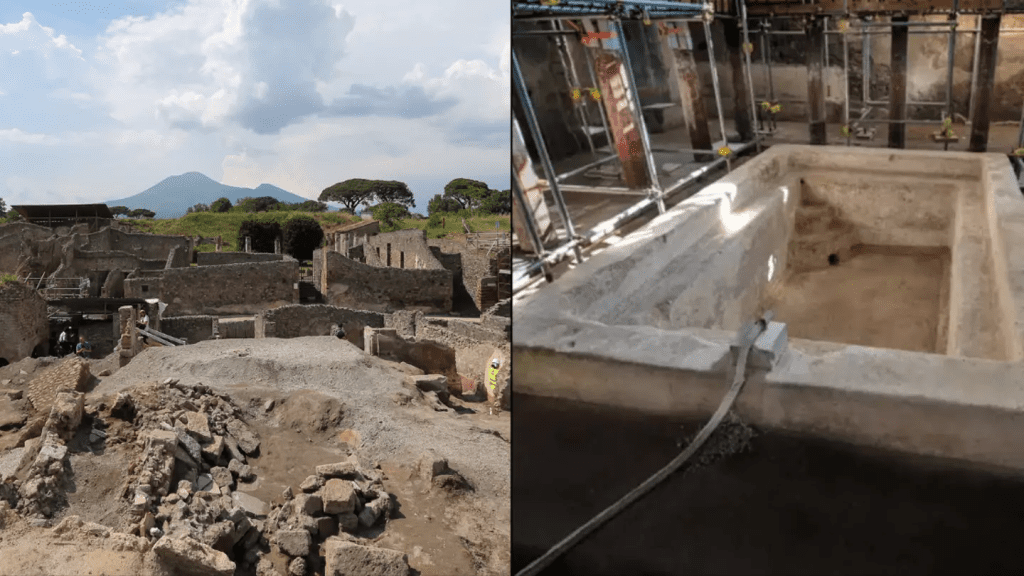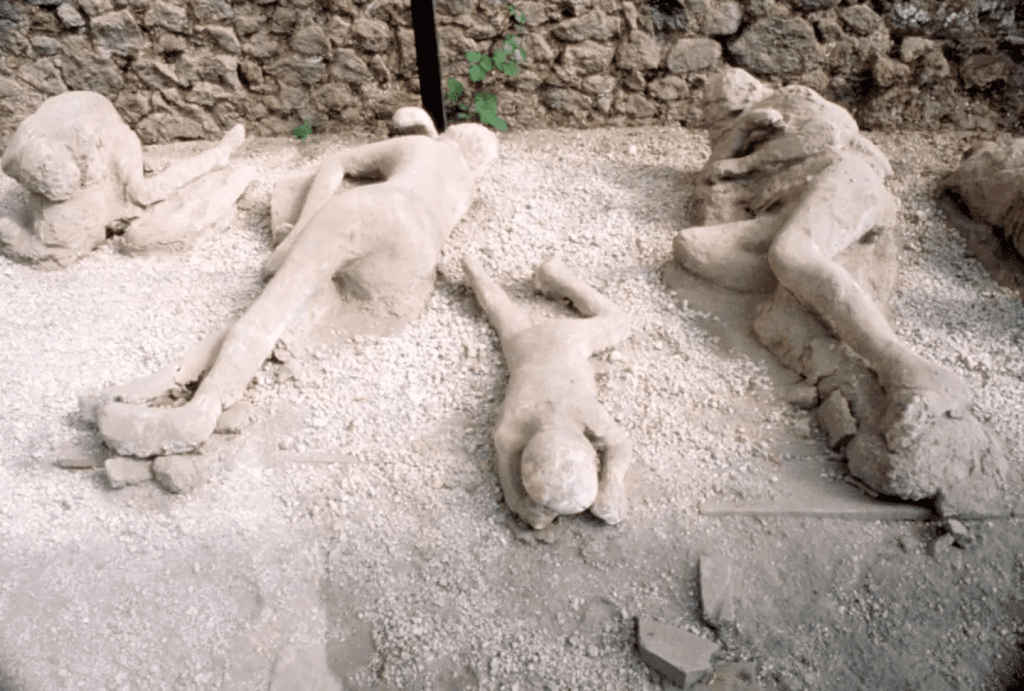A remarkable discovery has been made in Pompeii, shedding new light on the ancient Roman city buried by the eruption of Mount Vesuvius nearly 2,000 years ago. Known for its historical significance, Pompeii has long been a site of excavation, and fresh revelations continue to unfold, offering insight into Roman life.

The city, once home to an estimated 10,000 to 20,000 residents, was overwhelmed by a violent eruption in 79 AD. While many residents managed to flee during the initial pumice rain, over 1,100 bodies have been discovered on the site, providing a haunting reminder of the eruption’s devastating impact. In addition to the preserved bodies, archaeologists have uncovered an array of items from the past, including coins, jewelry, and silverware.
Excavations in Pompeii have been ongoing since the 18th century, with numerous important discoveries made over time. One of the most groundbreaking recent finds is a large private bathhouse, believed to be the biggest of its kind in the city. This bathhouse, part of a grand residence, features a hot, warm, and cold room, along with exquisite artwork and a large plunge pool. Dr. Gabriel Zuchtriegel, director of the Archaeological Park of Pompeii, described the discovery as part of the “Pompeii effect,” where the preserved spaces make it feel as though the people had just left moments ago.
This bathhouse is part of an entire block that includes a laundry, bakery, and a grand private home, which is thought to have belonged to a wealthy individual—potentially the influential politician Aulus Rustius Verus. Dr. Zuchtriegel highlighted the rarity of such private bath complexes, emphasizing that they were reserved for the wealthiest members of Roman society. This bathhouse is likely the largest of its kind ever found in a Pompeian home.

The bathhouse itself provides a glimpse into the luxurious side of Roman life. The bathing complex consists of several rooms, including a vibrantly decorated changing room with a mosaic floor. Visitors would transition through the hot room, relax in a sauna-like setting, and then proceed to a warm room where oil was applied to the skin. The experience culminated in the cold room, which featured red columns and a plunge pool big enough to accommodate 20-30 people. Dr. Zuchtriegel noted that this area was a popular socializing spot where individuals would enjoy a refreshing dip and wine in the summer months.
While the discovery showcases the opulence of the Roman elite, it also highlights the stark contrast between the privileged and the enslaved. Dr. Sophie Hay pointed out the grueling conditions faced by slaves who operated the furnace and boiler rooms that heated the bathhouse. These workers endured unbearable conditions, toiling away in extreme heat, while the wealthy enjoyed the luxuries of the bath complex just on the other side of a wall.
As the excavation continues, more historical discoveries are emerging. Two skeletons were found within the grand house, offering a poignant reminder of the eruption’s deadly consequences. One of the bodies—a woman—was found clutching jewelry and coins, likely attempting to protect herself from the pyroclastic flow of hot gas and ash that killed her and many others.

Despite the wealth of information uncovered, a significant portion of Pompeii still lies buried under volcanic debris. This latest excavation is one of the most extensive in recent years and has greatly expanded our understanding of Roman life. Once completed, the site will be opened to the public, offering visitors an opportunity to explore this captivating chapter of history.


